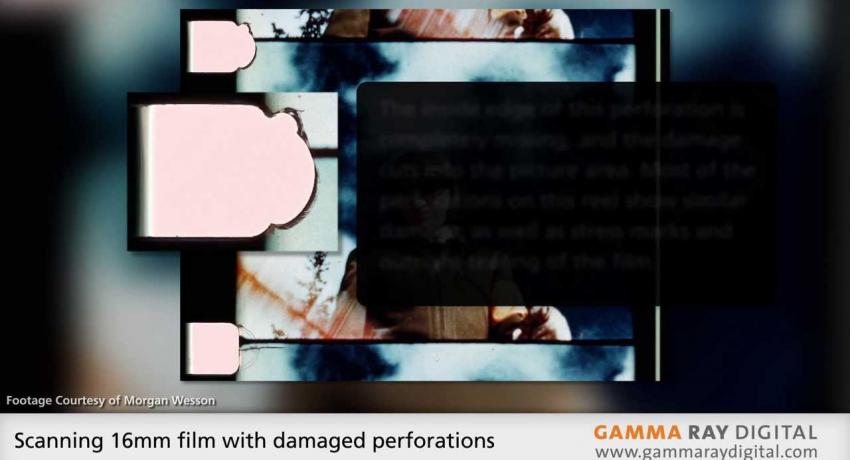One of the reasons we chose the Lasergraphics ScanStation after a multi-year search for a small gauge archival film scanner was its ability to handle damaged film. There are quite a few scanners out there now that have sprocket-free film transports, but none matches the ScanStation when it comes to image stability.
A feature of the scanner is that it's actually capturing the whole frame from edge to edge, including the sprocket holes. The final result usually doesn't include much more than the picture area, but the camera still captures the perfs and frame edges. Using real-time motion tracking on the edges of the perforations, the scanner is able to align the frames with greater precision than a mechanically pin-registered transport, and the results are really impressive.
But what happens if the perforations are damaged?
We got some 16mm film from a client this Summer that serves as a good illustration of how well the scanner is able to cope with film damage. As you can see in the video above, the perforations are fairly consistently blown out on the inside edge. You'd think this would make the alignment of frames difficult since it's these perfs that the scanner is using as a reference, but the software is smart enough to work around the damage, and the result is a stable image.
We hope to show some Super8 footage soon that has a similar problem, but it's even more impressive because the damage is worse, and in Super8 the scanner only has one perforation per frame to use as reference.


